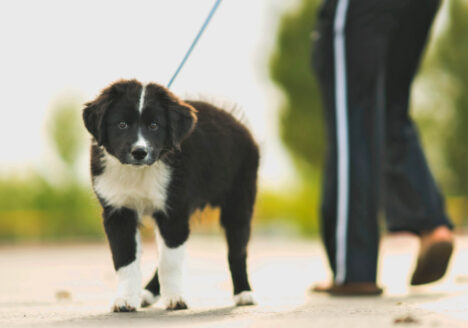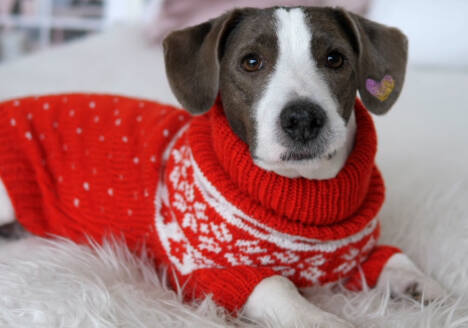Winter in Central Oregon offers fun for you and your pets, and a bit of preparation can help keep them safe.
The crisp, snow-dusted landscapes of Central Oregon beckon us and our furry friends to embrace the winter season. However, alongside the joy of snowy adventures, we must be mindful of the unique hazards this weather presents. At the Veterinary Referral Center of Central Oregon (VRCCO), we witness firsthand the consequences of winter’s potential dangers, from frostbite and antifreeze poisoning to injuries sustained on the slopes. But fear not, with a touch of preparation and the right gear, you and your dog can revel in a safe and happy winter.
Cozy Comfort: Keeping Your Dog Warm and Snug
Central Oregon’s winter chill demands careful consideration of your dog’s breed and coat. While robust breeds like Huskies, Akitas, Labradors, and Bernese Mountain Dogs, with their thick, water-resistant fur, often thrive in snowy conditions (provided they stay dry!), smaller or thin-coated breeds such as Chihuahuas and Pitbulls require extra warmth. A cozy jacket is essential, and they generally prefer the warmth of indoors when the mercury plummets. Remember, regardless of breed, bring all pets inside at night and whenever temperatures dip below freezing.
Booties: Essential Footwear for Winter Walks
Even in the heart of winter, our dogs crave their daily walks, vital for their physical and mental well-being. After venturing into the snowy landscape, rinse your dog’s paws in lukewarm water to gently warm them and remove any irritating ice, salt, or de-icing chemicals. Regular paw grooming, especially trimming excess hair between the toes, significantly reduces ice buildup. Dog booties are the gold standard for protecting paws from icy surfaces, sharp objects, and potentially harmful chemicals. While your dog might initially adopt a comical gait in booties, patience and positive reinforcement will quickly lead to comfortable strides. Musher’s Secret, a protective wax, offers an additional layer of defense against ice, though it won’t prevent cuts.
Slope Safety: Protecting Paws on the Powder
For those who enjoy skiing or snowboarding with their canine companion, vigilance is key. The sharp edges of skis and snowboards pose a significant risk to your dog’s paws. Always maintain a safe distance and be prepared with a small, soft wrap, such as an ace bandage, to address any minor injuries until you can reach a veterinary clinic.
Antifreeze: A Hidden Danger
Antifreeze containing ethylene glycol is a silent killer, extremely toxic to pets and capable of causing fatal kidney damage. Even the “safer” propylene glycol-based antifreeze is still poisonous. Both cats and dogs are drawn to its sweet taste. Store antifreeze securely, clean up any spills immediately, and regularly check your vehicle for leaks. If you suspect your pet has ingested antifreeze, contact a poison control hotline, such as the ASPCA Animal Poison Control Center, without delay and seek emergency veterinary care.
By taking these precautions, you and your furry friend can fully embrace the beauty and excitement of Central Oregon’s winter, creating cherished memories while ensuring their safety and well-being.


